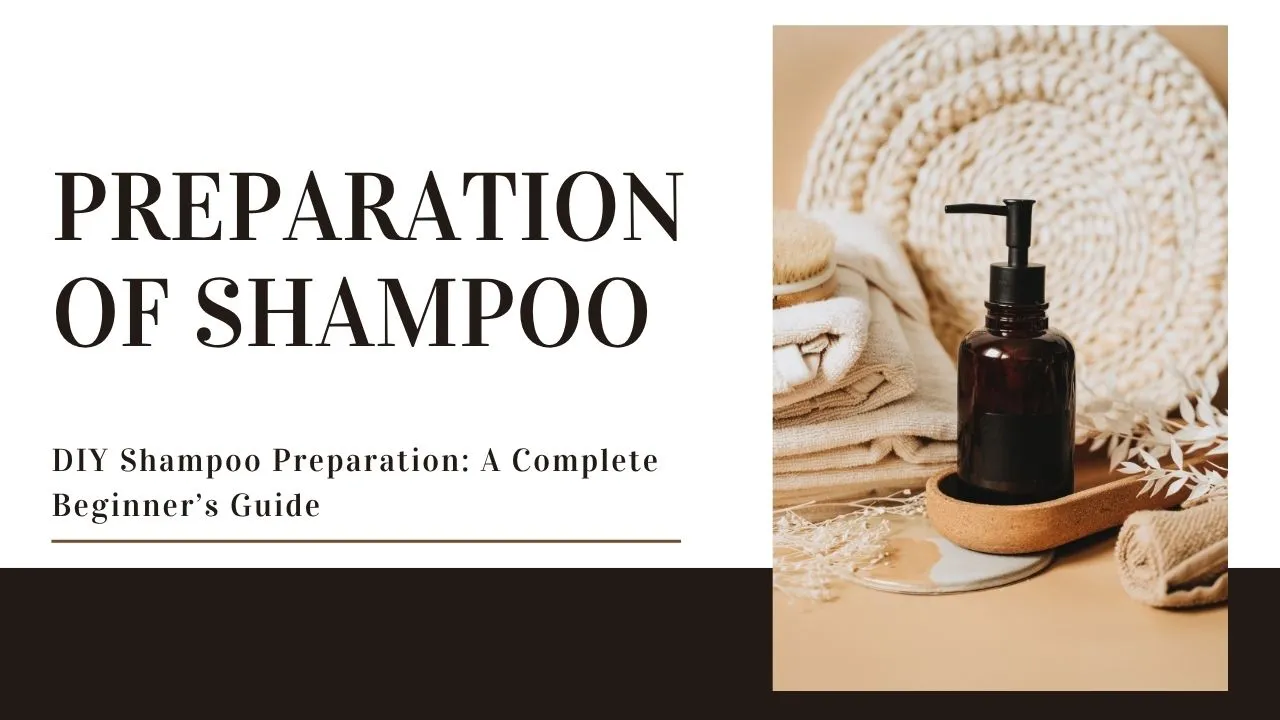One of the frequently used personal care products is Shampoo that is used to clean hair by removing dirt, oil, sweat, among other impurities where the hair and scalp is cleaned. Although it looks simple, a delicate interplay of cleansing, conditioning, and safety is embedded in a shampoo’s formulation. Knowledge on how shampoo is prepared aids in scholarly pursuits, aids in the advancement of cosmetics, and even encourages one to tinker around with hair care DIY projects.
Purpose and Function of Shampoo
The main purpose of shampoo is gentler cleansing of hair and scalp without removing too much oils, irritation to the scalp and removing hair. It also has to rinse off easily and have an enjoyable fragrance along with leaving the hair soft and manageable to the touch. Various grades of ingredients need to be used and blended precisely if results of this nature are to be yielded.
The Primary Ingredients Found In Shampoo
The composition of shampoo can be subdivided into different sections, each serving a distinct function:
- Surfactants: These are the primary cleansing components. Sodium lauryl sulfate (SLS) and sodium laureth sulfate (SLES) are frequently used. They assist in breaking down oil, suspending dirt, and allowing it to be rinsed away.
- Foaming agents: Improve the lathering experience.
- Conditioners: Softer hair is easier to comb and less brittle than conditioned hair. Ingredients like silicones, panthenol, or natural oils improve softness and reduce tangling.
- Thickeners: Sodium chloride or carbomers make shampoo more gel-like and can be perceived as thickeners.
- Preservatives: Common options such as parabens and phenoxyethanol are often used to prevent growing bacterial or fungal.
- Fragrances and colorants: Add a pleasant smell and color to shampoo. Improve sensory appeal.
- pH adjusters: Maintaining mildly acidic shampoos, such as citric acid, are good for scalp health.
Equipment Required
For the preparation of shampoo, more so on a small-scale or educational setting, you need:
- Glass mixing containers (beakers)
- Stirring rods or magnetic stirrers
- Thermometers
- pH meters or test pH strips
- Clean storage containers
A Comprehensive Guide To Preparing A Shampoo
- Heating the Aqueous Phase: The first step involves heating distilled water to about 70–75 °C since this facilitates the mixing of liquids and the dissolving of solid components.
- Adding Surfactants : Surfactants SLS or SLES should be added to the hot water and stirred to a moderate surfactant – foam to liquid ratio. Mixing should be done without too much bubbling.
- Incorporating Other Ingredients Add secondary surfactants, conditioning agents, and thickeners. Continue stirring until the mixture becomes uniform and starts thickening.
- Wrapping Up the Procedure: Cooling the Mixture and Incorporating Heat Sensitive Additives: Mixture should be cooled down to a temperature of 40°C. To prevent evaporation, or any possible degradation due to heat, attach colorants, fragrances, and preservatives in this step.
- Measuring and Modifying pH Levels: Check the final pH with the pH strips and/or a pH meter. Modify, if necessary, within the limits of citric acid or sodium hydroxide. Between 4.5 to 5.5 pH is regarded as the best.
- Putting the Product in Packages: Fill the clean, disinfected bottles with the final product. Mark with time and date along with details of the contents.
Designing your very own shampoo can be looked at through the prism of science and art. As every product, it requires ingredients and methods that are safe, and efficient. You can prepare shampoo for various reasons, be it educational, industrial, or personal, and once you learn how to formulate shampoo, the evolving world of creativity in hair care is yours for the taking. Shampoo preparation requires an understanding of the ingredients and procedures someone aims to follow, along with the proper safety ensured.

